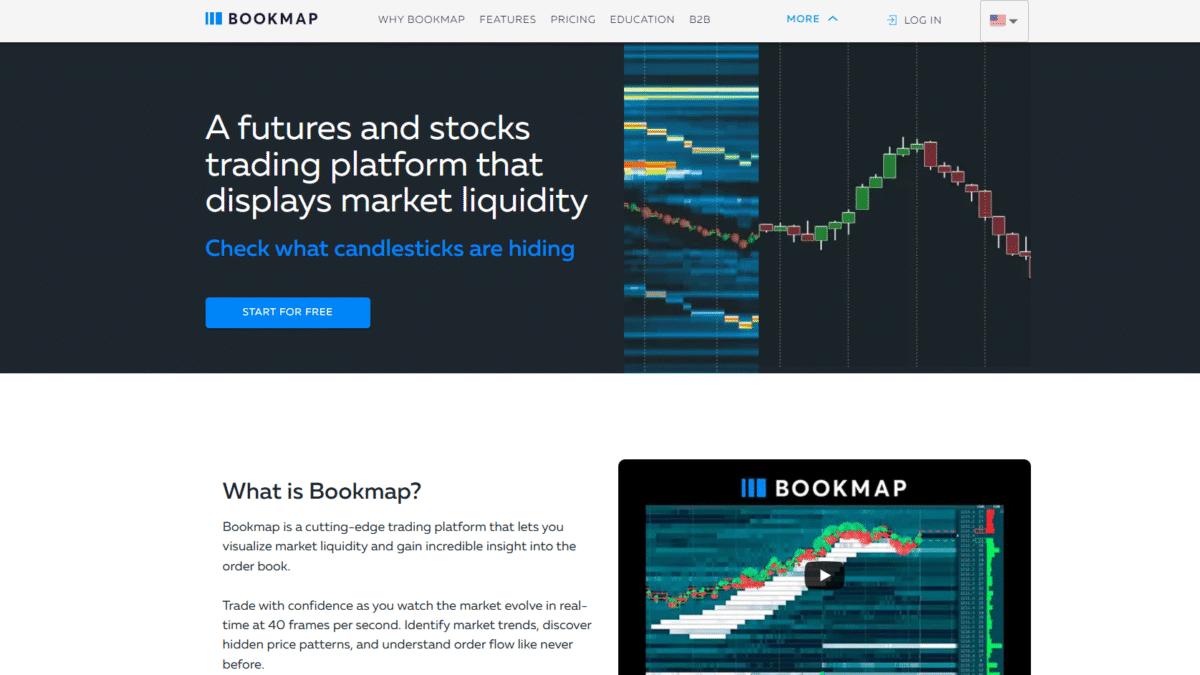
Liquidity Trading Strategies: How to Maximize Market Profits and Efficiency
Searching for the ultimate guide to liquidity trading? You’ve come to the right place. By visualizing order flow and real-time market depth, Bookmap empowers you to spot supply and demand imbalances before they trigger big moves. Start trading smarter with Bookmap today and unlock powerful insights into every price level.
Whether you’re a day trader, scalper, or swing trader, mastering liquidity trading is the key to maximizing profits and boosting efficiency. In this comprehensive walkthrough, you’ll learn foundational concepts, proven strategies, risk controls, and how to leverage Bookmap’s cutting-edge features to gain an edge in any market.
What Is Liquidity Trading?
Liquidity trading involves analyzing the flow of buy and sell orders—also called order flow—to uncover hidden support and resistance levels. By watching where large limit orders accumulate and how incoming market orders interact with those layers, traders can anticipate price reactions with greater precision than traditional indicators allow.
Core Principles of Liquidity Trading
- Order Flow Analysis: Track aggressive buying and selling to measure genuine market conviction.
- Depth of Market (DOM): Observe the stacked limit orders at each price level to gauge liquidity pools.
- Supply & Demand Zones: Identify clusters of resting orders where large participants are likely to enter or exit.
- Imbalance Detection: Spot mismatches between bids and offers that often precede rapid price shifts.
Essential Liquidity Trading Strategies
1. Liquidity Zone Identification
Find price levels where substantial limit orders lie in wait. These zones often act as support or resistance. By placing trades just above or below these levels, you align with institutional interest and ride momentum with lower slippage.
2. Order Book Imbalance
When one side of the book consistently outweighs the other—say, bids far exceed offers—it signals potential price movement in that direction. Entering a position in line with this imbalance lets you capitalize on the sweep of resting orders.
3. Iceberg Order Detection
Large players often break big orders into smaller chunks (icebergs) to mask their footprint. By watching how volume bubbles appear and dissipate on Bookmap, you can infer the hidden size and anticipate a strong directional push.
4. Spoofing and Front-Running Awareness
Recognize deceptive order activity intended to mislead participants. Rapid order placements and cancellations can distort perceived liquidity. Mastering this helps you avoid false breakouts and position yourself ahead of real moves.
Advanced Techniques for Maximizing Profits
Scalping Near Liquidity Clusters
- Target short-term reversals at high-volume nodes.
- Use tight stop losses just beyond the cluster edge.
Mean Reversion Around Support & Resistance
- Enter trades when price overextends beyond resting orders.
- Confirm with volume spikes indicating exhaustion.
Momentum Breakout Strategies
- Wait for sweeping of major liquidity levels.
- Join the breakout when aggressive volume surges above the best bid or below the best offer.
Implementing Liquidity Trading with Bookmap
Bookmap is designed specifically for liquidity trading. Its real-time heatmap and depth-of-market tools let you visualize every limit order posted on the exchange. Here’s how Bookmap’s main features power your strategies:
- Liquidity Heatmap: See the evolving landscape of resting orders. Identify areas of support/resistance at a glance and adjust your entries accordingly.
- Volume Bubbles: Track execution volume with precise sizing. Large bubbles flag significant absorption or exhaustion, perfect for timing reversals.
- Best Bid and Offer (BBO): Monitor real-time spread dynamics. Watch how incoming trades react to changes in BBO to capture early signs of market fatigue.
- Current Order Book: View full depth of market in a configurable window. Tailor font sizes and columns to focus on the most relevant price levels.
- Nanosecond Zoom: Drill down to micro-time frame details. Observe every fill and cancellation with a smooth 40 FPS refresh.
- Record & Replay: Save live sessions and replay them to refine your approach. Test strategies in simulation before committing real capital.
Getting started takes just a few clicks: install Bookmap, connect to your data feed, join a free webinar, and begin placing informed trades. Ready to elevate your order flow analysis? Get 20% OFF Bookmap Today and start seeing liquidity like never before.
Risk Management in Liquidity Trading
- Position Sizing: Base size on account risk tolerance—never risk more than 1–2% per trade.
- Stop Placement: Use liquidity zones as logical stop points, avoiding arbitrary distance-based stops.
- Trade Frequency: Limit the number of simultaneous trades to maintain focus and manage margin.
- Emotional Control: Let objective data drive decisions. Avoid chasing illusory breakouts caused by noise orders.
Tips for Improving Efficiency and Consistency
- Review replayed sessions weekly to spot recurring liquidity patterns.
- Maintain a trade journal documenting entry triggers, stop levels, and outcomes.
- Adjust your heatmap color settings to highlight only the most significant liquidity clusters.
- Join Bookmap’s community webinars to share insights and learn new setups.
Conclusion
Mastering liquidity trading unlocks a higher level of market insight, letting you anticipate moves before they happen. By adopting the strategies above and leveraging Bookmap’s advanced visualization tools, you can trade with confidence, precision, and efficiency. Ready to transform your approach?
Get 20% OFF Bookmap Today and start capturing hidden market opportunities now.
